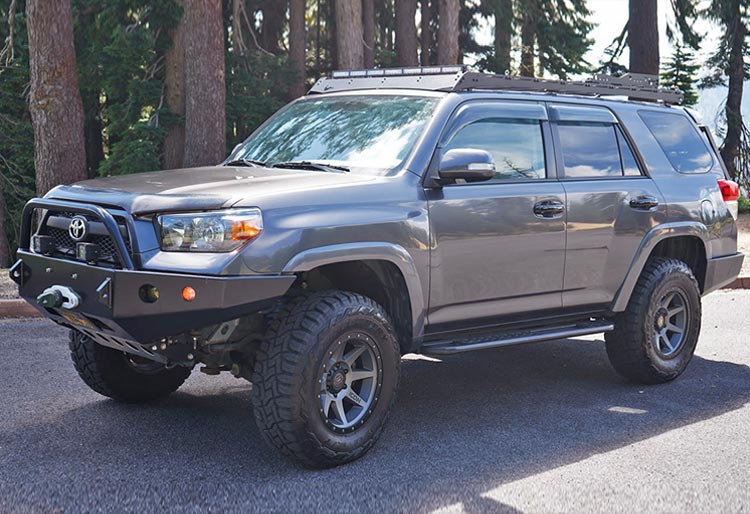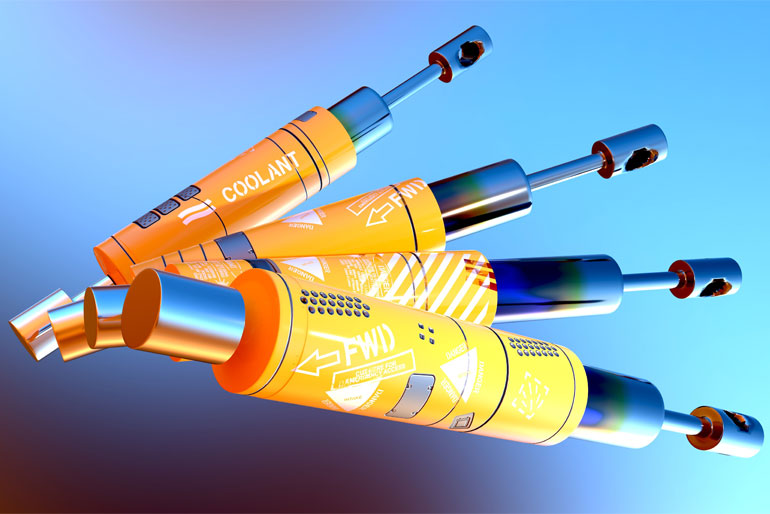Your car’s suspension system helps you keep it in control and enjoy a smooth drive. It’s the part that helps you manage the friction on your car tires and the road, helping you drive comfortably even when you’re on uneven terrain. But you can also improve your car handling and performance in several ways.
While the most obvious way is trying to push the engine’s power, it’s not the only way. This is where improving your car’s suspension comes into play. This article talks about how you can improve your car’s performance by upgrading its suspension system with coilovers.
What are coilovers?
Coilover stands for coil spring over the shock, which basically means that you’re covering the shock with a coil spring. The purpose of the coil spring is to absorb the bounce energy of the car, preventing your car from bouncing off the road. They work similarly to struts, but they’re more of a self-contained system, making a single unit consisting of the shock mounts, shock absorber, coil springs, and other components.
Coilovers are a kind of car suspension upgrade that lets you adjust your car’s damping, camber, height, and so on. Their primary purpose is to lower your car’s center of gravity, reducing weight transfer when doing corners. But you can also get them to improve the aesthetic look of your car, as they give it a more dramatic appearance.
Benefits of installing coilovers
Here are the most prominent benefits coilovers bring to your ride:
- Adjustability: One of the things car owners find attractive in this upgraded suspension system is the adjustability. This makes them a good choice for people who want a low ride that doesn’t scrap the road. On the other hand, it’s also ideal for those who love high rides. It gives you the ability to adjust your car according to your preference.
- Handling: Compared to the factory’s shock suspension system, many car owners feel like upgrading the system with coilovers to improve handling. A custom suspension system allows better handling when taking corners and in the other parts of the ride.
- Prestige: If you install the good type, upgrading your shock system will earn you some points in your circle. Coilovers are regarded highly among car afterparts as they offer a high aesthetic value.
Basic coilover installation guide
The best place to have your coilover installed is at an auto shop. However, learning how to install them on your own isn’t a bad idea at all. But you need to have the right tools for the job, including:
- Jack stands, and a floor jack
- Torque wrench
- Measuring tape
- Penetrating oil
- Socket set
- Hammer
- Spring compressor
- Wheel chocks
Step 1: Measuring and planning
Ensure your car is on level ground and measure its current height––the measurement from the center of the wheel to its fender. This will help when you’re adjusting your car’s height to the one you prefer. The night or a day before you install, spray penetrating oil on the bolts you’ll need to remove. You might be surprised when the most challenging part of the job is trying to loosen the bolts holding the car struts, particularly if they’re even a bit rusty.
Step 2: Lift the car and remove the wheels
It’s advisable always to use jack stands at all times. Never rely on the jack to hold your car up. The purpose of the jack is only to help lift the car. The jack stand will hold it in place.
Step 3: Remove the struts
You’ll find about three bolts around the strut perimeter and a center nut that holds the strut shaft at the front. The rear is likely only to have the nut fastening the shaft. You’ll also find another bolt on the lower control arm.
Step 4: Measure and set the height
After you’ve removed the struts, use them to set up your car’s height. Measure the unsprung struts and use them to make a rough estimate of your car’s height. It’s advisable to follow the instructions provided by the manufacturer when doing this step. Avoid going lower or higher than the recommended height.
Step 5: Install coilovers
Now, put the coilovers at the places where the struts are bolted. However, take note to avoid using an impact wrench on top of the coilover nuts. This might cause the shaft in the shock assembly to spin, damaging the seals. Ensure to torque it down to the recommended rating by the manufacturer. It’s recommended that you torque the control arm bolts when they’re around the standard riding height.
Afterward, if the camber plate came in the kit, install and adjust it accordingly. Remember also to return the brake lines if you unhooked them. You can apply some anti-seize on the preload adjustment threads of your coilovers. This will make it easier in the future when you make any adjustments.
Step 6: Return the wheels and check the car’s height
Put back your wheels and ensure everything is well fastened. Take the vehicle for a short drive, at least a few yards, so the suspension can settle. Take it back to the level ground and measure the height of the ride. The recommendation is to always stay within the manufacturer’s limits on height and preload adjustment.
Step 7: Go for an alignment
Whenever you do anything with your suspension, particularly loosening the control arms, always have a wheel alignment done on your car. Also, after driving for a while, ensure to re-torque the bolts you touched during installation.
Conclusion
Coilovers are an excellent upgrade to your car’s suspension system. Apart from making your car adjustable, they make handling better, and they carry an aesthetic value.







